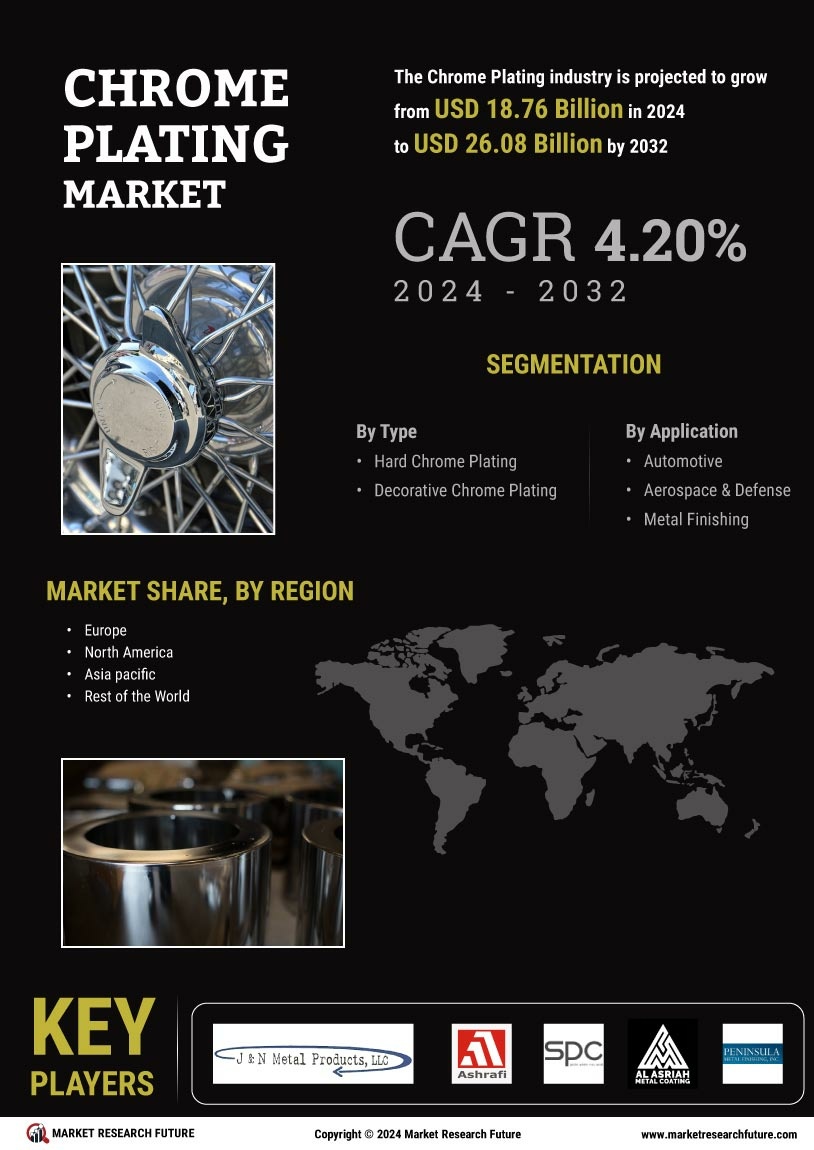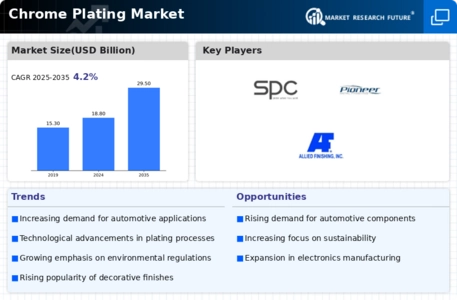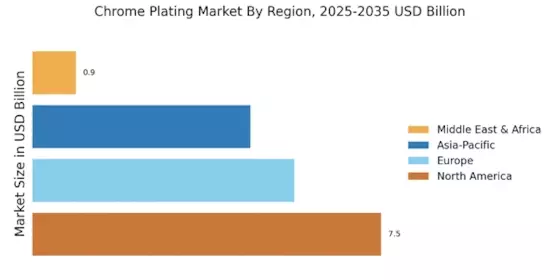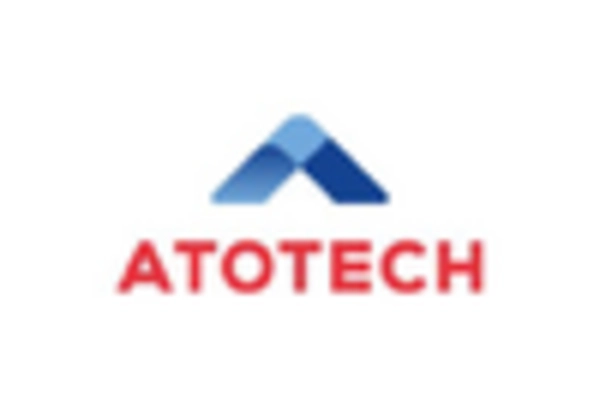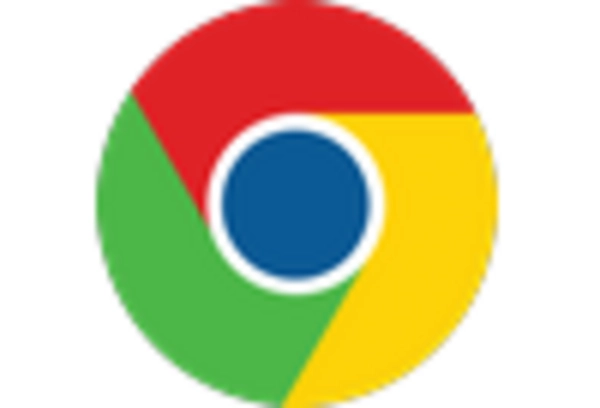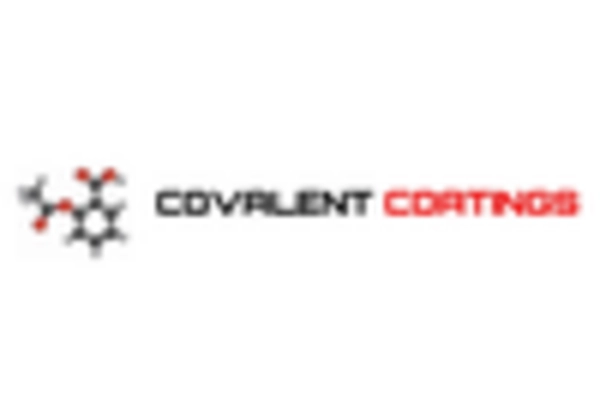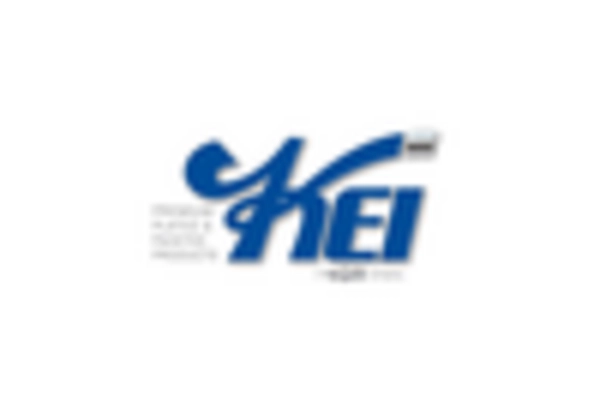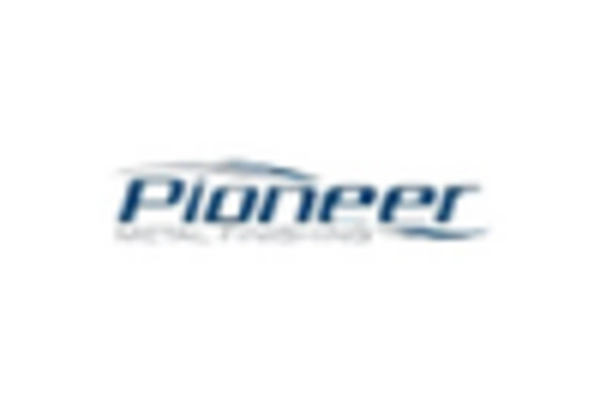Growth in Consumer Electronics
The Chrome Plating Market is significantly influenced by the burgeoning consumer electronics sector. With the increasing production of electronic devices such as smartphones, laptops, and home appliances, the demand for chrome plating is expected to rise. In 2025, the consumer electronics segment is estimated to represent around 25% of the overall market share. Chrome plating not only enhances the aesthetic appeal of these devices but also provides essential protection against wear and tear. As manufacturers strive to differentiate their products in a competitive landscape, the use of chrome plating is likely to become a standard practice. Furthermore, the trend towards smart home devices and IoT products may further amplify the need for chrome-plated components, thereby driving growth in the Chrome Plating Market.
Rising Demand in Automotive Sector
The Chrome Plating Market is experiencing a notable surge in demand, particularly from the automotive sector. As manufacturers increasingly prioritize aesthetics and durability, chrome plating serves as a vital finishing process for various automotive components. In 2025, the automotive industry is projected to account for approximately 30% of the total chrome plating market, driven by the need for enhanced corrosion resistance and visual appeal. This trend is further supported by consumer preferences for vehicles that exhibit a polished and high-end appearance. Additionally, the integration of chrome-plated parts in electric vehicles is anticipated to bolster market growth, as these vehicles often require lightweight yet durable materials. Consequently, the automotive sector's expansion is likely to propel the Chrome Plating Market forward, creating opportunities for manufacturers and suppliers alike.
Infrastructure Development Projects
The Chrome Plating Market is poised to benefit from ongoing infrastructure development projects across various regions. Governments and private entities are investing heavily in infrastructure, including bridges, railways, and public facilities, which often require durable and corrosion-resistant materials. In 2025, infrastructure projects are projected to contribute approximately 20% to the chrome plating market. The use of chrome plating in construction equipment and structural components is essential for ensuring longevity and reducing maintenance costs. As urbanization continues to rise, the demand for robust infrastructure is likely to escalate, thereby creating a favorable environment for the Chrome Plating Market. This trend suggests that manufacturers may need to adapt their production capabilities to meet the increasing requirements of the construction sector.
Emergence of Eco-Friendly Alternatives
The Chrome Plating Market is currently navigating a landscape increasingly influenced by the emergence of eco-friendly alternatives. As environmental regulations tighten, there is a growing emphasis on sustainable practices within the plating industry. While traditional chrome plating processes have faced scrutiny due to their environmental impact, innovations in eco-friendly plating technologies are gaining traction. In 2025, it is anticipated that eco-friendly alternatives could capture up to 15% of the market share, as manufacturers seek to comply with regulations and meet consumer demand for sustainable products. This shift may compel traditional chrome plating companies to invest in research and development to create less harmful processes. Consequently, the Chrome Plating Market may witness a transformation, balancing the need for aesthetic appeal with environmental responsibility.
Technological Innovations in Plating Processes
The Chrome Plating Market is significantly shaped by ongoing technological innovations in plating processes. Advancements in electroplating techniques and automation are enhancing efficiency and precision in chrome plating applications. In 2025, it is projected that technological improvements could lead to a 10% reduction in production costs, making chrome plating more accessible to a broader range of industries. These innovations not only streamline operations but also improve the quality of the finished products, ensuring a superior finish and durability. As industries increasingly adopt advanced technologies, the Chrome Plating Market is likely to experience a shift towards more sophisticated and efficient production methods. This trend suggests that companies investing in technology may gain a competitive edge, positioning themselves favorably in the evolving market landscape.
